[ad_1]
We get it – hustle is hustle, and that includes car makers and salespeople. It’s part of the job to try and upsell you on feature after feature, boosting that ticket price with as many bells and whistles as this baby can fit. Still, sometimes the race to pack on the price pounds leaves us wondering what, exactly, the companies were thinking with some of these optional “luxuries”. Here are our 40 favorite head-scratchers from past and present.
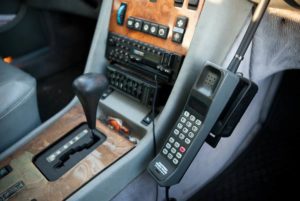
40. Concierge Lighting
You’ll probably spot a trend in this list – most of these features are, in addition to being silly, extremely expensive to maintain or replace. Concierge lighting, while simple to install, is an electrical nightmare if it breaks down. A flashy add-on to luxury sedans, in particular the Cadillac CT6. It might feel like rolling out the red carpet but when it fails, you’re definitely left in the dark.

39. Ice Maker
An absolute must-have for all those in-car cocktail parties, end sarcasm. While this feature was a highlight of a few vehicles meant for camping and road trips (okay, that makes a little more sense), it eats a lot of power for very little reward. Like the 80s Toyota Van that started this trend, it was cute while it lasted. You probably won’t see this offered ever again.
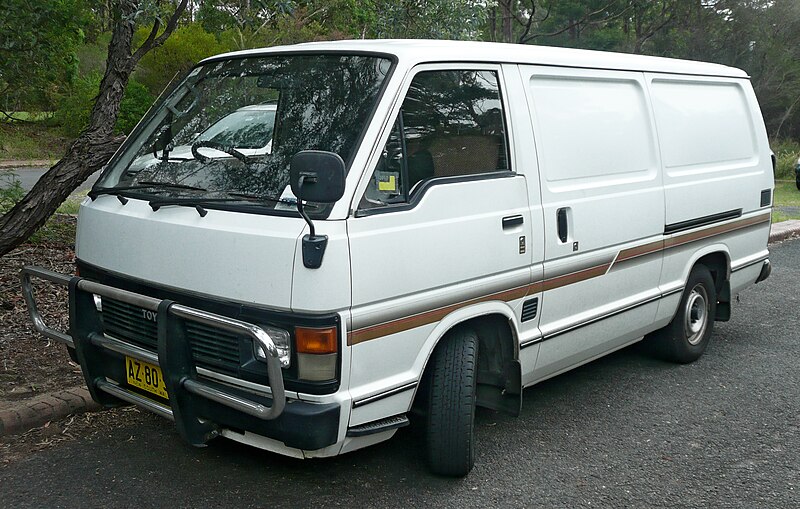
38. Social Media Suite
There’s no escaping social media even in the middle of the road, apparently. We’re not sure who exactly this benefits. It’s pretty common in cars with onboard computers nowadays – but it’s probably never going to be a favorite of the people who have to share the road with you.

37. Automatic Seatbelts
We can see the thought process behind this one, at least. During the 80s and 90s, road accident awareness pushed seatbelt use into the lead concern of the safety-minded. It was probably meant to help segue the driving public from the carefree mindset of the 70s into a more responsible age, and it probably succeeded. However, there’s no avoiding the fact that these systems were cumbersome, awkward, and – if they shorted out – potentially hazardous in their own right.

36. Manual Window Controls
This is a rare entry on this list – not a new idea but a feature that has been made so obsolete that it shouldn’t be offered at all. Who is still making cars with manual windows? Why? Even upgraded design for the manual system can’t make this relevant any more.

35. Built-In GPS
Again, this was a good idea executed without a lot of foresight. These systems would show up quickly once on-board computers became standard, but the early versions were overly complex to use and difficult to read and interpret on the road. Not to mention, these systems would rarely if ever get updates to the map – and in a time of booming real estate development, you can’t rely on old data to get you where you need to go.

34. CD Players
Don’t get us wrong – when these came out, they were top of the line and a mark of modernity. However, the advent of satellite radio and music streaming services have all but destroyed the physical sound medium. This feature is still offered on occasion, but we’re not sure why, as CDs seem headed along the path of the eight-track.

33. Wing Windows
This feature was seen on the original VW Beetle but showed up all over the place in the 70s. These triangular windows were hard to operate and didn’t do much to increase airflow. We suspect these might have been helpful for the in-car smoker to ash through, but fortunately most drivers now are aware of all the reasons not to smoke in your car.

32. Power Antennas
These were designed to solve a particular problem, and to be fair, they did. A power antenna would retract into the body of the car when not in use, thus saving the driver from catching it on low-clearance spots. However, this solution came with a host of new issues, most notably that the cost to replace them was absurd – you needed an audio specialist, which would run the bill up astronomically.

31. Pop-Up Headlights
Another example of a solution that creates more problems than it solves, these electric headlights were expensive, unnecessary, and prone to breaking. And when they did break, your car became virtually undriveable until you could get working headlights again. Most carmakers have thankfully waved goodbye to these pointless peepers.

30. Ashtrays
Jumping back to smoking in cars, the on-board ashtray was a feature of car design well past the point where this practice became uncommon. These showed up in cars all the way into the early 2000s. And even when they were in regular use, they were hard to empty and just stank up the car even more – and like we said, most people just ash out the window anyway.

27. Sealed-Beam Headlight
There were some advantages of this style of headlight – it was affordable and the whole operation was extremely replaceable. However, their power usage couldn’t stand up to the incoming halogen and, eventually, LED style of headlight. Despite being legally mandated up into the 80s, there’s just no escaping progress, especially once it became possible to replace just the bulb in a headlamp and leave the rest of the unit intact – way, way cheaper and easier for the layperson.

26. Digital Gauges
Digital dashboards are definitely the norm nowadays, but that’s after a lot of hard design work to make them as readable and recognizable as the original analog styles. When digital gauges were first introduced in the 80s, they were hectic, complicated, and overcrowded with information. They just weren’t as effective as the old models, and even into the new digital age, we mimic the analog design that is so recognizable.

25. Automatic Lighting
The problem with some automatic systems is that they encourage people to stop paying attention to details. Automatic lighting ended up leading to more drivers assuming their headlights were on without checking. This leads to danger on the roads, especially in conditions of low visibility.

24. Cylinder Cutoff
Another good idea with terrible execution. This technology is meant to stop the cylinder from pulling in fuel when it doesn’t need to, retaining more gas in the tank. However, when it first showed up during the 80s gas crisis, the computers weren’t sophisticated enough to make these calculations and it led to a lot of headaches for both driver and mechanic. Car companies are still working on this but the complexity of the process make this a tricky technology overall.
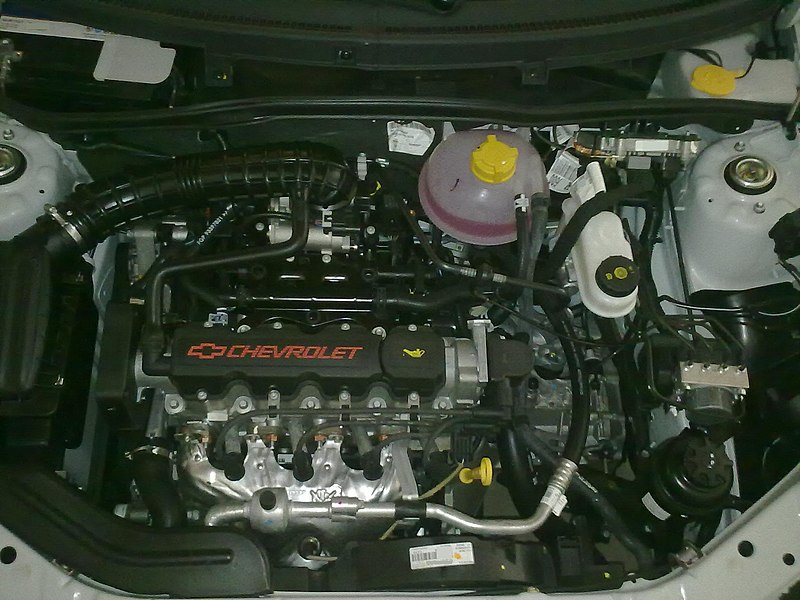
23. Voice Recognition
This might be the best example of a useless feature. It costs a bomb and improves almost nothing. If you want to feel like Knight Rider, maybe it’s worth the cost, but you’re probably better off just talking to yourself.

21. Picnic Suite
Who among us hasn’t thought to ourselves, “wow – it sure would be nice to sit and have cocktails in the trunk of my SUV.” We’re guessing that’s… most of us, actually. Rolls Royce may be the pinnacle of luxury, but this feature of the Cullinan doesn’t exactly seem designed for the discerning consumer.
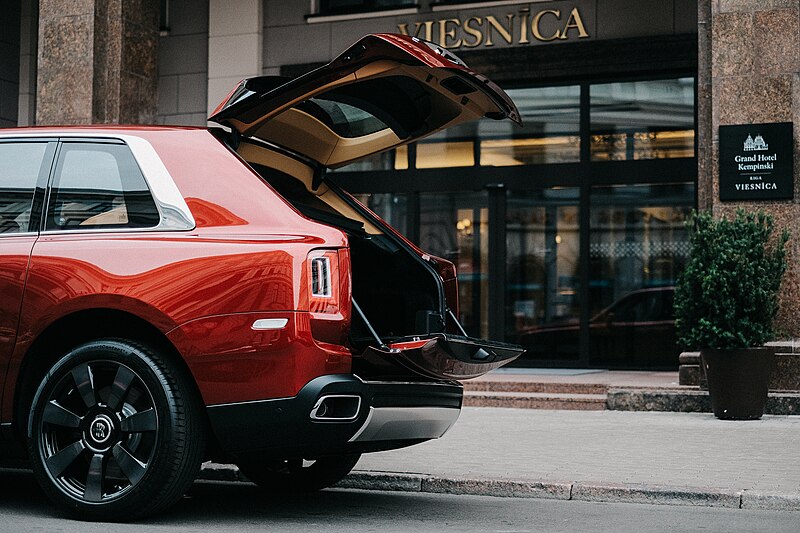
20. Satellite Radio
We’re just not sure why this feature still shows up in cars. It burst onto the scene right before the iPod took off and was immediately overshadowed – why subscribe to a service when you can have your favorite songs at your fingertips? Even if you’re dedicated to the ad-free radio experience, your phone and some Bluetooth functionality is a much better way to get it.
19. Paddle Shifters
Paddle shifters seemed poised to bridge the gap between the ease of the electronic transmission and those who miss the manual shifting experience. These controls rested right by the steering wheel, making them ideal for race car drivers who can’t take their hands away for a moment – but less so for your average driver. Most cars can shift automatically now and, for those who still want that hands-on feel, there are better options available.

17. Suicide Doors
Yep, that’s definitely a word I want to associate with driving. These doors are hinged from opposite ends front to back, making them especially difficult to use in a tight parking space. Maybe you want to burst from your car like you’re walking into a western saloon, or as if you’re entering a majestic ballroom? That’s the only reason we can think of for these absurd features.

18. Interlocked Seatbelts
If you thought electronic seatbelts were silly, get ready for these – all the electronic fussiness of the original, with the added bonus that if they stopped working, so would your whole car! These systems were flawed from the start and easily bypassed. Eventually, safety focus would shift from ways to force people to belt up towards air bag technology that could save lives regardless – and the roads are better for it.

17. Motorized Rear View Mirrors
The rearview mirror is a key component of safe driving, so naturally you’d want to make using it as complicated and breakable as possible, right? We can’t think of anything less demanding to be motorized, since this mirror is universally within reach of the driver. This has been a feature of high-end luxury cars and doesn’t seem to do much except prove the owner has money to throw away.

16. Moisture-Sensing Windshield Wipers
This seems like a good idea in theory, but like a lot of other examples on this list, the execution was never going to work as well as you might hope. Windshield wipers can and do save lives in hazardous conditions, and it’s important to have control over your visibility in the rain. Unfortunately, the wipers don’t always adjust to the rain correctly and might be delayed – and on the road, precious seconds matter.

15. Headlight Wipers
These were, at least theoretically, useful for off-roaders who might splash mud onto their headlights and need to be able to clear them in a hurry. However, a lot of European cars that are designed for street driving began to feature these little guys in the 90’s. They were less about practicality and more about showing off how many extra features you could afford. Kind of adorable but dumb.

14. Electronic Parking Brakes
This technology ties a reliable parking brake to the car battery, of all things. It’s not a totally ridiculous idea, but the brake becomes unusable if the battery dies – meaning it can’t be unlocked if you need to move it. It feels safe to say that every driver has experienced a car battery dying in an unexpected place, and getting your car off the road isn’t something that should ever be in question.
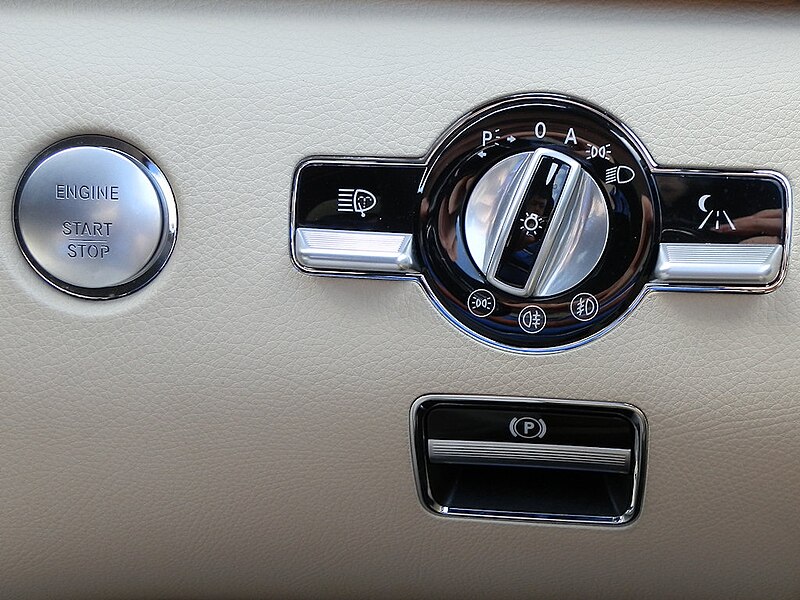
12. Built-In Cigarette Lighters
These are probably the most well-known example of a stupid car feature. Despite supposedly catering to smokers, they were dangerous even to their target market, since they got red-hot in seconds and were easy to fumble and drop in your lap – and even easier for a curious young child to grab onto. Fortunately, this spot in the car has now been almost universally repurposed as a dedicated power outlet.

11. Car Phone
This was the quintessential 90’s status symbol – everyone wanted one, but only the wealthiest could afford it. As it turns out, that’s because you need to have a really relaxed attitude towards your own money to think that this was a good investment. Anyone could have guessed that phone technology would soon outstrip the massive chunk of telecom wiring in your console, and the cost of the associated phone plans was astronomical.

10. Cargo Nets
The advent of the minivan and SUV opened up a world of opportunities for people to start transporting their own cargo. Auto companies jumped on the bandwagon with these cargo nets and organizers cribbed right from the pick-up playbook. Unfortunately, the nets provided were often way too feeble for heavy-duty hauling, and way cheaper than their price point would suggest.
9. Sto-N-Go Seating
Chrysler realized in the early 2000s that they couldn’t ride the success of the aging Grand Caravan in the van and SUV market forever. One of their strategies to update these minivans for the modern era was to focus on making it easier to transform your vehicle from people-carrier to cargo-carrier. The design of Sto-N-Go seating is impressive, but the mechanics involved are fiddly, and they get stuck too easily to be worth the cost of the up-sell.

8. Built-In Coolers
Just like the onboard ice-maker, this feature is a solution in search of a problem. This feature showed up for a while on models that ended up being largely forgettable and quickly faded into obscurity. It’s a good concept in theory but so rarely used that they aren’t worth your money.

7. Soft Close Doors
The vacuum system that allowed this gentle, paint-saving feature to function was a good design. Unfortunately, it was also expensive to repair and trapped car owners in a costly maintenance cycle. It ends up being much easier to just learn not to slam your doors in the first place.
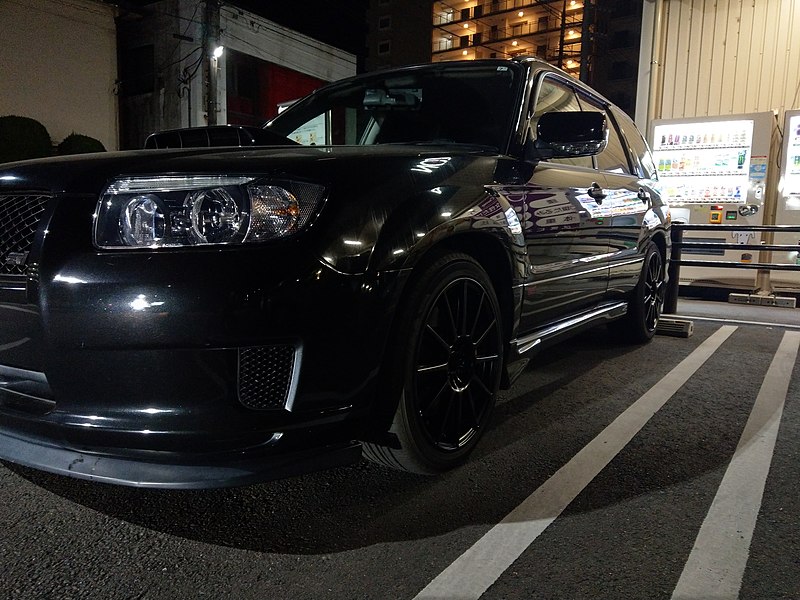
6. Automatic Doors
For those car buffs that love the smooth look of shaved door handles, admittedly these self-opening doors are absolutely necessary. Otherwise, they are essentially useless, and just add more complicated electronics to the driving and maintenance process. If you’re going to keep your car handle, you might as well just use it.

5. Massage Seats
As anyone who has sat in a massage chair can tell you, the mechanisms don’t exactly fade into the background. Even the most luxury-focused car buyer would be hard pressed to claim that these improve the driving experience. Steer clear of these in favor of stable back support instead.

4. Rear Seat Entertainment System
Touted as a way to keep your kids entertained on long road trips, the problem with these systems is how quickly they become obsolete. The original models even used VHS players, whereas now even DVD and Blu-Ray seem ancient compared to streaming. And there are so many travel options now that long-form driving trips with the family aren’t really common enough to warrant the purchase price.

3. Folding Tables
These awkward echoes of airline travel seem doubly useless in a moving car. In addition to being super breakable and taking up space, any bumps in the road are going to reverse the usefulness of a table really quickly. At best, you’ll invite spills – at worst, some serious carsickness.
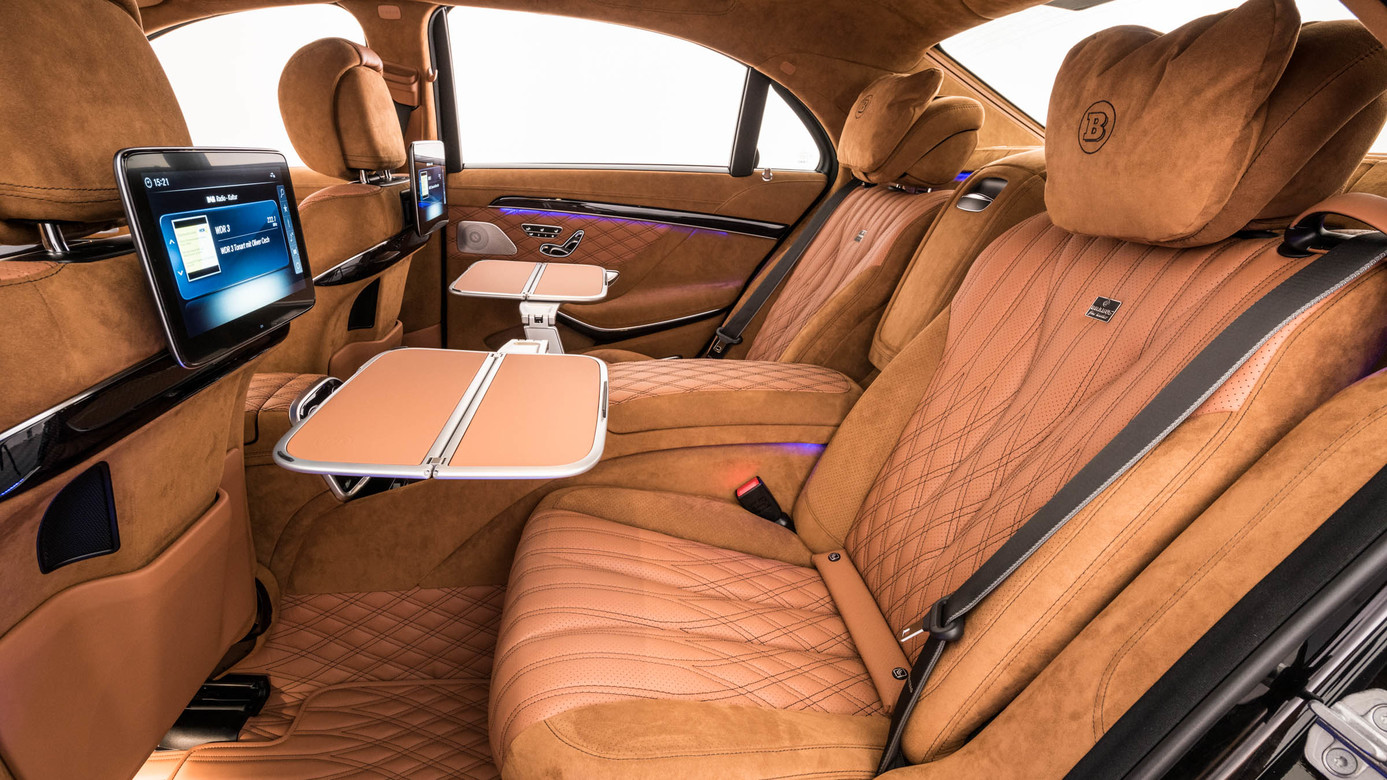
2. Gesture Control
Real talk: this technology only barely works on our smartphones. Why would anyone want this as a feature of their onboard computer? There’s probably much more sensible things you should be doing with your hands instead of trying to swipe your fingertips in the exact right pattern for the seventh time. However as a feature of cars like the 2016 VW Golf, this feature probably isn’t going away anytime soon.

1. Touchpad Controller
This is a much more sensible approach to computer navigation than the gesture control – it keeps your hands firmly on the wheel and moves the cursor in a more intuitive way. However, having a touchpad makes it easier to accidentally select the wrong thing as you move your hands, and trying to correct a mistake can distract you from where your eyes should always be – on the road, keeping yourself and your passengers safe.

[ad_2]
Source link